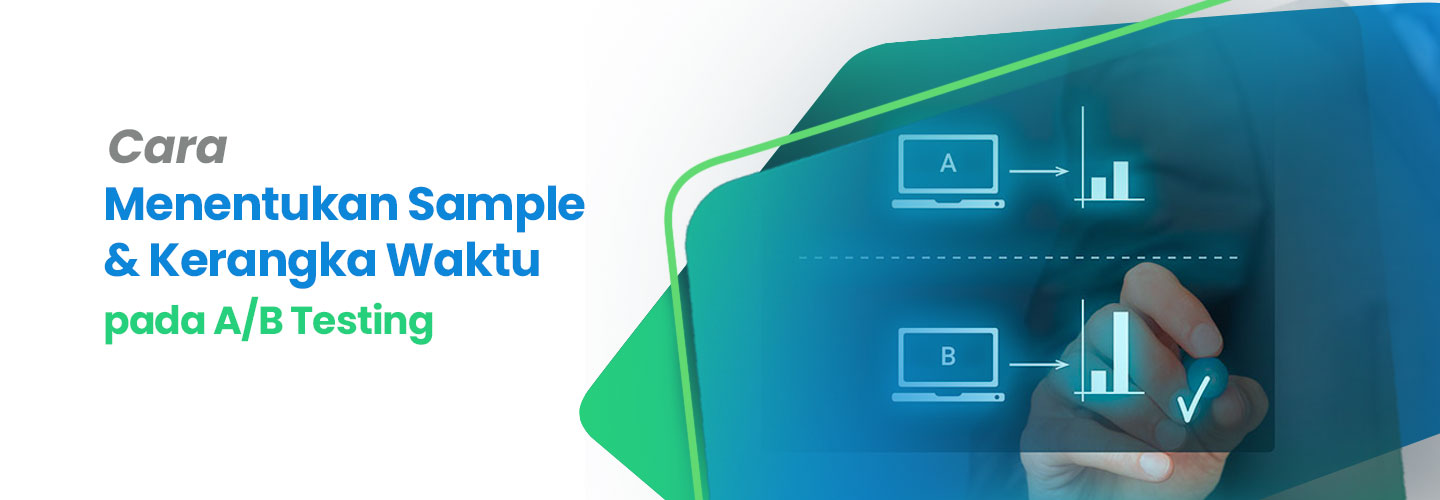How to Determine Sample and A/B Testing Time

A high level of traffic on the website is the hope of all brands. However, nowadays it is difficult to attract customers to visit the company's website. This may happen because the display, writing, and delivery of content created by the brand is still not right.
To get to know your customers better, you can do A/B testing, which is a test that is done by comparing two different things. The results of this A/B testing can be a good strategy when the results of the comparison are deemed able to attract the attention of customers.
A/B testing can be done in various processes within the company such as product development, marketing, to distribution. However, it's a good idea to know the conditions for carrying out these tests in order to get optimal results.
How to Determine A/B Testing Sample Size
The A/B testing process is used to compare two similar things. Let's say your company wants to find out which ad emails are getting the most clickthroughs. Usually, more positive results can be used as a brand campaign strategy by doing the following steps.
1. Make sure you have enough customers to sample
In order to determine which is the best between variations A and B, you must have at least 1,000 customers to contact. This is important to be able to determine a strong enough validation of the test results to be carried out.
2. Use the sample counting tool
To calculate make sure you use a counter that can determine the sample. Currently, there are many free tools that can be used to perform A/B testing. You can work with one of the tools that are most relevant to your testing needs.
3. Enter the relevant data into the tool
Every company has a different target customer so there is no definite benchmark for designing a system. Whether it's website optimization, creating compelling copywriting, or designing the most effective products.
To find out the best results that can be applied to your company, you have to find out what your target customers prefer. In using the A/B testing tool, you will come across the following terms.
- Population: a group that represents the target customer and is used as a sample of a testing process.
- Confidence interval (margin of error): the range of results of A/B testing reports with predicted predictions and usually the larger the sample, the smaller the interval.
- Confidence level: the level of confidence which is usually 95% which is characteristic of the confidence interval calculation procedure, not the interval itself.
Examples of A/B Testing Companies Can Do
When you are doing A/B testing by sending 1000 emails, you have 95% confidence that the emails have been received. Here's what to do when you want to be 95% sure that the highest number of votes falls within the 5-point interval of the sample population metric.
1. Calculate your sample
If you have one control or one variation, you must double the number. If you have two controls or two variations you have to triple it, and so on.
2. You may need to calculate the percentage of the sample size of the whole
It's not just the raw sample, you have to choose the percentage of contacts that will get the test. To do this, you need to divide the number in your sample by the total number of contacts in the list. For example 274/1,000 = 27.4%. This means every sample, whether control or variation needs to be sent to 27-28% of customers.
When is the Right Time for A/B Testing?
In addition to knowing the purpose of and how to perform A/B testing, you need to know how long it will take to perform the test. One thing that needs to be considered is when the customer opens or clicks on the A/B testing email that will be carried out.
For this you can use previously done email data and analysis. For example, what percentage of total clicks did you get on the first day? If you get 70% of clicks in the first 24 hours, then 5% every day after that, then better send the next email under 24 hours.
The sample size, the way A/B testing is performed, and the final result can be hours, days, or weeks depending on the brand. However, careful testing and following statistics will help to get optimal and expected results.
Through the Certificate of Business Management: Marketing Management program, company executives can take part in a marketing training program that discusses the important role of marketing when acting for for-profit and not-for-profit organizations.
In addition to teaching in class, improving skills in testing and product development will be more practical. Participants will join in case studies, group discussions, comprehensive summaries through seminars, and group assignments at the end of the program.